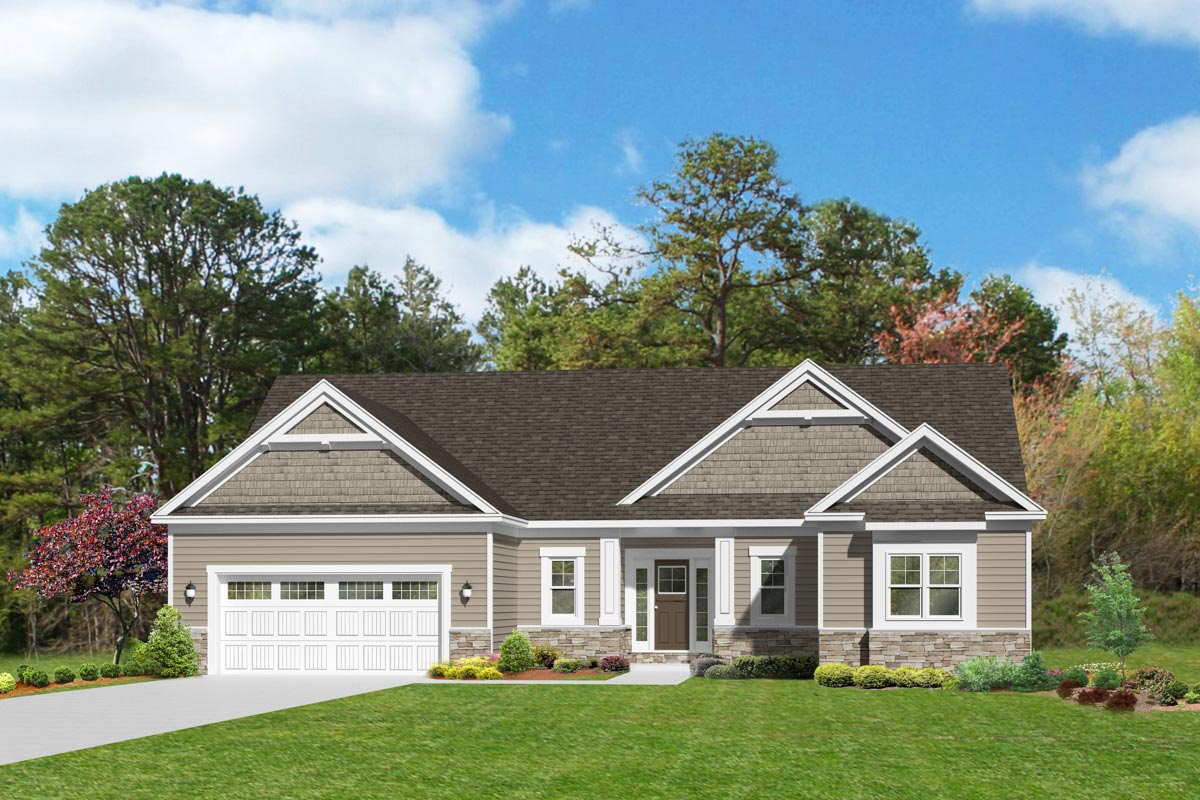Factors Influencing 3-Bedroom House Size

The size of a 3-bedroom house is influenced by a variety of factors, including its location, architectural style, amenities, and local building codes. Understanding these factors can help you estimate the average square footage of a 3-bedroom house and make informed decisions when searching for your dream home.
Location’s Impact on House Size
The location of a house significantly influences its size. Urban areas with limited land often have smaller homes, while suburban or rural areas with more space tend to have larger houses. For example, a 3-bedroom house in Manhattan, New York, might be significantly smaller than a 3-bedroom house in a suburb of Chicago. Additionally, the cost of land in a particular area also plays a role in determining the size of homes built there. Expensive real estate markets might have smaller homes due to the higher price per square foot.
Architectural Styles and Typical Square Footage Ranges
The architectural style of a house also impacts its size. Here are some common architectural styles for 3-bedroom homes and their typical square footage ranges:
- Colonial: 1,500 – 2,500 square feet
- Ranch: 1,200 – 2,000 square feet
- Craftsman: 1,800 – 2,800 square feet
- Modern: 1,600 – 3,000 square feet
- Victorian: 2,000 – 4,000 square feet
These ranges are just general guidelines, and the actual square footage can vary depending on other factors.
Impact of Amenities on House Size
The number of bathrooms, living areas, and other amenities can significantly affect the overall size of a 3-bedroom house. For example, a 3-bedroom house with two full bathrooms and a finished basement will typically be larger than a 3-bedroom house with one and a half bathrooms and an unfinished basement. Other amenities like a garage, deck, or patio can also add to the overall square footage.
Building Codes and Regulations
Building codes and regulations in a particular area can influence the size of a 3-bedroom house. These codes often specify minimum square footage requirements for bedrooms, bathrooms, and other rooms. Additionally, local zoning regulations may restrict the maximum size of a house on a particular lot.
Regional and International Comparisons
The average square footage of a 3-bedroom house can vary significantly between different regions and countries. For example, a 3-bedroom house in the United States might average 1,800 – 2,500 square feet, while a similar house in the United Kingdom might average 1,200 – 1,800 square feet. These differences are often due to variations in land costs, building materials, and cultural preferences for living space.
Data and Statistics on 3-Bedroom House Sizes: Average Weight Of 3 Bedroom House

Delving into the world of 3-bedroom homes, we encounter a fascinating array of data and statistics that provide valuable insights into their size, trends, and variations. Understanding these metrics can be crucial for homeowners, buyers, and real estate professionals alike.
Reputable Sources for Data
The following sources offer reliable data on average 3-bedroom house sizes:
- U.S. Census Bureau: The Census Bureau conducts comprehensive surveys, providing data on housing characteristics, including average house sizes by region, year built, and other demographic factors.
- National Association of Realtors (NAR): The NAR collects and analyzes data on home sales, including average square footage for different types of homes, providing valuable insights into market trends.
- Real Estate Data Providers: Companies like Zillow, Redfin, and Trulia compile data from various sources, offering estimates of average house sizes in specific locations.
Methodologies for Data Collection and Analysis, Average weight of 3 bedroom house
These organizations employ a variety of methodologies to collect and analyze data on house sizes:
- Surveys: The U.S. Census Bureau conducts periodic surveys of households, gathering information on housing characteristics, including square footage.
- Sales Data: The NAR and real estate data providers collect data on home sales, including square footage, providing a snapshot of current market trends.
- Property Records: Publicly available property records often include information on house size, providing a historical perspective on changes in construction standards.
- Statistical Modeling: Data providers often use statistical models to estimate average house sizes based on factors such as location, year built, and other relevant variables.
Historical Trends in Average 3-Bedroom House Sizes
Over time, average 3-bedroom house sizes have exhibited noticeable trends:
- Post-World War II Boom: The period following World War II saw a surge in suburban development, leading to a significant increase in average house sizes.
- Energy Crisis of the 1970s: The energy crisis of the 1970s prompted a shift towards smaller, more energy-efficient homes, resulting in a slight decrease in average house sizes.
- Recent Trends: In recent decades, average 3-bedroom house sizes have generally increased, driven by factors such as growing families, changing lifestyles, and the desire for more space.
Average 3-Bedroom House Sizes by Location
| Location | Average Size (sq ft) | Year Built |
|—|—|—|
| New York City | 1,500 | 1980-2000 |
| Los Angeles | 1,800 | 1990-2010 |
| Chicago | 1,600 | 1970-1990 |
| Houston | 2,000 | 2000-2020 |
| Phoenix | 1,700 | 2010-2020 |
| Denver | 1,900 | 2000-2020 |
| Seattle | 1,800 | 2010-2020 |
| San Francisco | 1,600 | 1990-2010 |
| Miami | 1,700 | 2000-2020 |
| Dallas | 2,100 | 2010-2020 |
It’s important to note that these figures represent averages and can vary significantly based on specific neighborhoods, property styles, and other factors.
Applications of Average 3-Bedroom House Size Information

The average size of a 3-bedroom house is a valuable piece of data that can be applied in various ways, offering insights into housing trends, design considerations, and urban planning strategies. This information is particularly useful for real estate professionals, architects, urban planners, and homeowners themselves.
Real Estate Valuation
Understanding the average 3-bedroom house size in a specific area can help real estate professionals accurately assess the value of properties. This data allows them to compare the size of a property to similar homes in the market, providing a more objective basis for pricing. For instance, a 3-bedroom house that is significantly smaller than the average size in its neighborhood might be valued lower, while a larger-than-average home might command a premium price.
Home Design
Architects and interior designers can use average 3-bedroom house size data to optimize the design and functionality of homes. By understanding the typical layout and space allocation in homes of this size, they can create designs that are both aesthetically pleasing and practical. They can ensure that rooms are adequately sized, traffic flow is efficient, and storage space is sufficient, catering to the needs of a typical family living in a 3-bedroom house.
Urban Planning
Urban planners can leverage average 3-bedroom house size data to inform decisions related to housing density, infrastructure development, and community planning. This information helps them understand the typical housing needs of a population, allowing them to create communities that are well-suited to the size and composition of families. For example, knowing the average size of 3-bedroom houses can help planners determine the appropriate lot sizes for new developments, ensuring that there is sufficient space for homes and amenities.
Neighborhood Comparison
Average 3-bedroom house size data can be used to compare different housing markets or neighborhoods. This can help potential homebuyers identify areas that align with their preferences and needs. For instance, a family looking for a spacious home might be interested in neighborhoods with a higher average 3-bedroom house size. Conversely, those seeking a more affordable option might focus on areas with smaller average house sizes.
For example, let’s say a family is considering moving to a new city. They are looking for a 3-bedroom house in a safe and family-friendly neighborhood. By researching the average 3-bedroom house size in different neighborhoods, they can identify areas that offer the desired space and amenities. If they find that one neighborhood consistently has larger 3-bedroom houses than others, it might be a good indication that it caters to families with a higher need for space.
Average weight of 3 bedroom house – The average weight of a 3-bedroom house, a behemoth of bricks and mortar, can be surprisingly variable. It depends on the materials used, the size of the structure, and even the weight of the furniture within. But imagine, instead of bricks and mortar, a haven of luxury.
Discovery Suites 3-bedroom suites offer a different kind of weight, a weight of comfort and opulence, where the only heavy thing is the feeling of contentment. Back to the average house, though, its weight is a testament to the solidity of a home, a place where life unfolds, and memories are made, just like in a Discovery Suite, but perhaps with a slightly different kind of weight.
The average weight of a 3-bedroom house can vary significantly depending on the materials used and the size of the structure. But if you’re looking for more affordable housing options, you might consider exploring cheap 3 bedroom apartments in Denver, CO.
While apartments might not have the same weight as a traditional house, they offer a more budget-friendly way to accommodate a family or group of individuals.